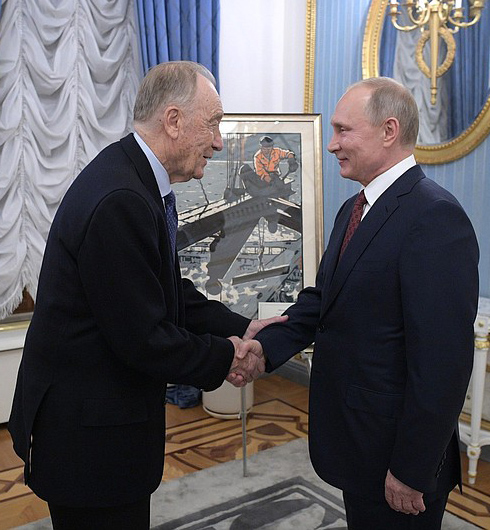
The other evening, while browsing the classical videos on YouTube with a help of a gin and tonic, I came across a performance of Stravinsky’s ballet Pulcinella performed by Rotterdam’s Scapino Ballet. Not having heard the music for decades, I decided to sit through the entire work. It’s less than forty minutes and the investment of time proved an entertaining experience.
Pulcinella was written ten years after the Rite of Spring when the composer was developing an interest in a concept that became known as neo-classicism. It had emerged in the early twentieth century partly, I suppose as a kind of artistic reaction to the excesses of nineteenth century romanticism. Anyway, the notion was to revisit the music of the 17th and 18th centuries and borrow ideas that could be presented in a more modern setting. Stravinsky claimed that he was the first to do this, though not everyone would have agreed.
Nevertheless, the ballet Pulcinella marked the beginning of Stravinsky’s musical venture into neo-classicism. At the time, the composer was involved with the famous Ballet Russes, an itinerant ballet company based in Paris and directed by the charismatic Sergei Diaghilev. The company achieved international acclaim with tours all over Europe and America between 1909 and 1929 thought oddly enough, never in Russia. The Revolution probably had something to do with it.
Diaghilev wanted a new ballet based on an early 18th-century libretto, the music for which was presumed to be by the Italian baroque composer Giovanni Battista Pergolesi. Diaghilev had somehow managed to acquire copies of the original scores and although Stravinsky wasn’t initially very impressed with the idea, he eventually changed his mind. So began the Pergolesi-inspired ballet which strictly speaking, should be called neo-baroque rather than neo-classical. Stravinsky did a second take on the original and cleverly updated the music often using his own musical trade-marks. The ballet was to be performed in May 1920 in Paris with dancers and singers, costumes designed by Picasso, choreography by Massine and the orchestra conducted by Ernest Ansermet. What no one realised at the time was that the music that Stravinsky so brilliantly adapted for the twentieth century was not actually by Pergolesi.
Igor Stravinsky (1882-1971): Pulcinella Suite. Camerata Chicago cond. Daniel Sommerville (Duration: 23:23; Video: 1080p HD)
This suite was put together by Stravinsky in 1922, still laboring under the delusion that Pergolesi was the original composer. It was not until the 1980s that the truth came to light. Many works once attributed to Pergolesi (whose real name was Giovanni Battista Draghi) were written by other composers. Half the works by the lesser-known Baroque composer Domenico Gallo were attributed to Pergolesi, possibly because the more famous name would encourage more sales of the music. It’s likely that the ballet contains music by other relatively obscure baroque composers too. But perhaps it doesn’t really matter in the end, because Stravinsky created something unique in a musical style that is recognizably his. And if you don’t feel like watching the ballet, this eight-movement orchestral suite will bring you the flavour of the delightful music.
Rodion Shchedrin (b. 1932): Carmen Suite. Frankfurt Radio Symphony cond. Andrés Orozco-Estrada (Duration: 45:27; Video: 1080p HD)
I first came across the music of this amazingly prolific Russian composer in the early 1970s after hearing his Concerto for Orchestra No 1, a jolly piece with a subtitle variously translated as “Merry Ditties” or “Naughty Limericks”. Shchedrin has written a vast amount of music and this second take on Bizet’s most famous work is a show-stopper. Musician John Armstrong wrote, “You get all the familiar tunes dressed up in a way Bizet would never have imagined, and with a sly grin and a twinkle in the eye. Definitely not to be taken too seriously, especially with all the percussion and special effects from the strings.”
The work is scored for strings, a huge array of exotic percussion instruments, and more colour than Bizet’s original, though you’ll hear all the famous tunes often with touches of Shchedrinesque humour. So it helps if you are already familiar with the conventional version of Carmen before venturing into this musical adventure. You’ll even hear the famous Toreador Song which is surely among the best known of all operatic arias. The melody is so famous (partly due to an Esso TV commercial in Britain in the late 1950s) that at one point, Shchedrin omits the tune entirely leaving only the accompaniment. In a concert performance, you could be certain that some in the audience would be caught humming the melody.
But there’s no audience in this video, for the performance reflects our troubled times. The members of the orchestra too are socially distanced but the music, joyfully directed by Andrés Orozco-Estrada is utterly compelling. To my mind, this is forty-five minutes of pure enjoyment.
 |
 |
 |





